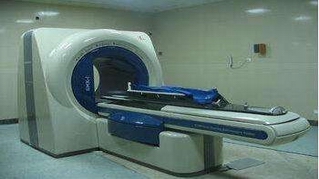纳米氧化铁(Ferumoxytol)被批准用于治疗患有慢性肾脏疾病(CKD)成年患者的缺铁性贫血(IDA)。目前已经开展了纳米氧化铁对所有类型的缺铁性贫血患者的治疗效果的研究。
2015年3月《临床药代动力学》(Clinical Pharmacokinetics)杂志发表了一项关于纳米氧化铁药动学研究,该研究对纳米氧化铁在健康人群和CKD并进行血液透析的患者人群中的药代动力学(PK)进行了研究,并对纳米氧化铁在所有类型的缺铁性贫血患者人群中的药动学行为进行了预测。
数据分析通过NONMEM进行,选择的参数包括协变量测试。测定结果确定了血液透析过程中体积分布是否发生了变化,并且提高了模型的拟合度。最终获得的模型被用来模拟健康志愿者、进行血液透析的CKD患者以及未进行血液透析的CKD患者的药动学行为。
结果显示Ferumoxytol的消除曲线为非线性二室模型。在血液透析过程中,中央室V1降低了0.198 L / h。初始V1在每公斤体重增加了0.614%,女性比男性低了18.3%。单剂量510 mg时,健康受试者和CKD非透析患者之间存在差异:Cmax分别为209和204毫ng/mL,AUCinf为5980和5920 ng/h·mL
结果表明,健康人与CKD患者的纳米氧化铁药动学参数存在差异,该研究获得的药动学参数能够对其他类型的IDA患者的药动学进行预期。
参考文献:Plock, N et al. Clinical Pharmacokinetics. 2015;54(4):385-395
英文链接:Population Pharmacokinetic meta-Analysis to Bridge Ferumoxytol Plasma Pharmacokinetics Across Populations.
http://link.springer.com/article/10.1007%2Fs40262-014-0203-9
Population Pharmacokinetic meta-Analysis to Bridge Ferumoxytol Plasma Pharmacokinetics Across Populations
原文摘要:
Background Ferumoxytol is approved for the treatment of iron-deficiency anaemia (IDA) in adult patients with chronic kidney disease (CKD). Ferumoxytol has recently been investigated for use in all-cause IDA. This analysis was employed to bridge ferumoxytol pharmacokinetics (PK) across populations of healthy subjects and patients with CKD on haemodialysis, and to then make informed inferences regarding the PK behaviour of ferumoxytol in the all-cause IDA population.
Methods The data analysis was performed using NONMEM. Selected parameters were included for covariate testing. Investigations to determine if changes in volume of distribution during haemodialysis improved the model fit were also conducted. The final model was used to simulate PK in healthy volunteers (HVs) and CKD patients with and without haemodialysis.
Results The final model was a two-compartment model with non-linear elimination. During haemodialysis, the central volume V1 was estimated to be reduced by 0.198 L/h. A positive relationship was identified between initial V1 and observed weight loss during haemodialysis. V1 increased by 0.614 % per kilogram of body weight, and females had an 18.3 % lower V1 than males. Differences between simulated profiles for different populations were marginal: maximum concentration (C (max)) of 209 vs. 204 ng/mL and area under the curve from time zero to infinity (AUC(inf)) of 5,980 vs. 5,920 ng center dot h/mL in HVs and CKD non-haemodialysis patients, respectively, for a single dose of 510 mg.
Conclusions The results indicate that ferumoxytol PK are comparable between HVs and CKD patients. Furthermore, the results are representative of the PK in other populations and can be used to bridge to subjects with general IDA.







